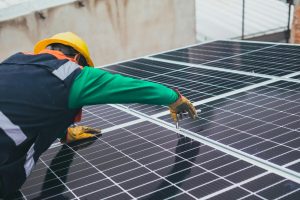Sustainable Products: Eco-Friendly Innovations As environmental concerns gain prominence globally, the demand for sustainable and eco-friendly products has surged. From reducing carbon footprints to minimizing waste, innovations in sustainability are reshaping industries and consumer behaviors. This article delves into the latest advancements in sustainable products, highlighting key innovations, market trends, and the impact these changes
Sustainable Products: Eco-Friendly Innovations
As environmental concerns gain prominence globally, the demand for sustainable and eco-friendly products has surged. From reducing carbon footprints to minimizing waste, innovations in sustainability are reshaping industries and consumer behaviors. This article delves into the latest advancements in sustainable products, highlighting key innovations, market trends, and the impact these changes have on both the environment and the economy.

Pexels.com
Understanding Sustainable Products
Sustainable products are designed with a focus on reducing environmental impact throughout their lifecycle—from production and use to disposal. These products often feature eco-friendly materials, energy-efficient manufacturing processes, and recyclable or biodegradable components. The goal is to create items that not only meet consumer needs but also contribute to the health of the planet.
Key characteristics of sustainable products include:
- Resource Efficiency: Utilizing renewable or abundant resources and minimizing waste.
- Energy Efficiency: Reducing energy consumption during production and use.
- Longevity: Designing for durability and longevity to extend product life.
- Recyclability/Biodegradability: Ensuring materials can be recycled or will naturally decompose without harming the environment.
Innovations in Sustainable Products
- Eco-Friendly Packaging:
One of the most significant areas of innovation is in packaging. Traditional plastic packaging is being replaced with biodegradable materials, recycled paper, and plant-based plastics. Companies are developing compostable packaging solutions that break down naturally, reducing landfill waste and pollution.
For example, companies like Unilever and Nestlé have committed to using 100% recyclable or compostable packaging by 2025. Innovations such as biodegradable films and plant-based containers are leading the charge in creating more sustainable packaging options.
- Energy-Efficient Appliances:
Energy efficiency is a critical factor in sustainable product design, especially for home appliances. Modern appliances are being engineered to consume less energy while delivering high performance. Innovations include smart thermostats, energy-efficient refrigerators, and LED lighting.
Philips, for instance, has developed LED lighting solutions that use up to 80% less energy than traditional incandescent bulbs. Similarly, Samsung has introduced energy-efficient refrigerators that utilize advanced cooling technologies to reduce power consumption.
- Sustainable Fashion:
The fashion industry is notorious for its environmental impact, but recent advancements are making strides toward sustainability. Brands are increasingly using organic cotton, recycled polyester, and eco-friendly dyes to create clothing that minimizes environmental harm.
Patagonia and Stella McCartney are leading examples of companies that prioritize sustainability in their product lines. Patagonia uses recycled materials in many of its products, while Stella McCartney focuses on cruelty-free and eco-friendly fashion.
- Green Building Materials:
Sustainable construction is becoming a reality with the advent of green building materials. Innovations such as recycled steel, bamboo flooring, and low-VOC paints contribute to environmentally friendly construction practices.
Interface, a global manufacturer of modular flooring, uses recycled materials to produce carpets and tiles that have a lower environmental impact. Bamboo, known for its rapid growth and renewability, is becoming a popular choice for flooring and building materials.
- Electric and Hybrid Vehicles:
Transportation is a major contributor to greenhouse gas emissions, and the shift toward electric and hybrid vehicles is a crucial development in sustainable products. These vehicles reduce reliance on fossil fuels and lower emissions, making them a key component in combating climate change.
Companies like Tesla and Toyota are at the forefront of this revolution. Tesla’s electric vehicles are known for their performance and range, while Toyota’s hybrid technology continues to improve fuel efficiency and reduce emissions.
Competitive Table: Sustainable Products
| Product/Company | Key Features | Strengths | Weaknesses | Market Position |
| Unilever Eco-Friendly Packaging | – Biodegradable materials <br> – Recycled content | – Reduces landfill waste <br> – Widely adopted | – Higher cost <br> – Limited availability | Leading in sustainable packaging |
| Philips LED Lighting | – Energy-efficient <br> – Long lifespan <br> – Low heat emission | – Significant energy savings <br> – Durable | – Higher initial cost <br> – Light quality variation | Major player in energy-efficient lighting |
| Patagonia Sustainable Fashion | – Organic materials <br> – Recycled content <br> – Eco-friendly dyes | – Reduces environmental impact <br> – Ethical production | – Higher cost <br> – Limited product range | Pioneer in sustainable fashion |
| Interface Recycled Flooring | – Made from recycled materials <br> – Low environmental impact | – Durable <br> – Reduces waste <br> – Eco-friendly | – Higher cost <br> – Limited design options | Leading in green building materials |
| Tesla Electric Vehicles | – Zero emissions <br> – Advanced technology <br> – Long range | – Reduces reliance on fossil fuels <br> – Innovative technology | – High initial cost <br> – Charging infrastructure limitations | Market leader in electric vehicles |
Analysis Table: Sustainable Products
| Product/Company | Strengths | Weaknesses | Opportunities | Threats |
| Unilever Eco-Friendly Packaging | – Reduces environmental impact <br> – Widely adopted | – Higher cost <br> – Limited availability | – Expansion into new markets <br> – Development of cost-effective materials | – Competition from traditional packaging solutions |
| Philips LED Lighting | – Energy savings <br> – Durable <br> – Eco-friendly | – Higher cost <br> – Light quality variations | – Increased demand for energy-efficient solutions <br> – Technological advancements | – Competition from other energy-efficient lighting brands |
| Patagonia Sustainable Fashion | – Ethical and eco-friendly <br> – Reduces environmental impact | – Higher cost <br> – Limited range | – Growth in eco-conscious consumer base <br> – Expansion into new product lines | – Competition from fast fashion brands |
| Interface Recycled Flooring | – Eco-friendly <br> – Durable <br> – Reduces waste | – Higher cost <br> – Limited design options | – Increased demand for sustainable building materials <br> – Innovation in design | – Competition from cheaper, non-sustainable alternatives |
| Tesla Electric Vehicles | – Reduces emissions <br> – Innovative technology <br> – Long range | – High cost <br> – Charging infrastructure limitations | – Expansion into new markets <br> – Advances in battery technology | – Competition from other electric and hybrid vehicle manufacturers |
Conclusion
The rise of sustainable products is driving significant changes across industries, leading to innovations that promote environmental stewardship and reduce ecological footprints. From eco-friendly packaging and energy-efficient appliances to sustainable fashion and green building materials, these advancements are setting new standards for how products are designed, produced, and consumed. As technology continues to evolve and consumer demand for sustainability grows, we can expect even more innovative solutions to emerge, further transforming the landscape of product manufacturing and contributing to a more sustainable future.
















